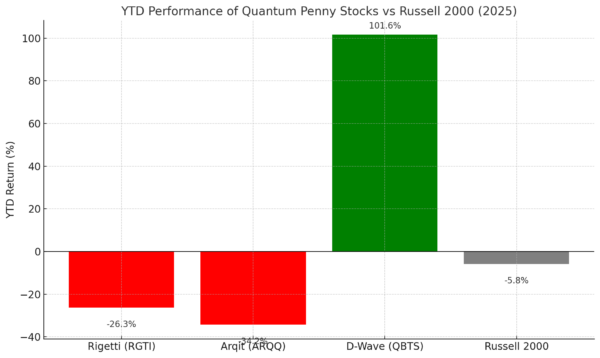Shopify Stock Forecast and Price Predictions
It’s never been easier to open up your own business than it is today. In the past, you would usually need to apply for a small business loan so that you could get a down payment to rent out a store. This was expensive and, if you couldn’t get a loan, then you had limited options. However, that’s all changed in the past few decades. Today, all you really need to start a business is a website or online store. When it comes to creating that online store, Shopify is one of the best options out there.
Just like Amazon, Shopify has profited from the rising popularity of eCommerce. However, instead of selling products, Shopify helps other people sell products. Shopify makes it easy for just about anybody to open their own digital store. In fact, there’s a good chance that a lot of the websites that you’ve visited recently were built on Shopify software.
So, if you’re already buying stuff from Shopify-built stores anyway, does that mean you should also buy Shopify stock?
Let’s take a look at a Shopify stock forecast and find out…
Shopify Stock Forecast (NYSE: SHOP)

Note: I’m not a financial advisor and am just offering my own research and commentary. Please do your own due diligence before making any investment decisions. I am also currently an investor in Shopify.
What Does Shopify Do?
Shopify is an online eCommerce platform for stores. It has products that can help out with processing payments, marketing, shipping and customer engagement. In this sense, Shopify not only helps people build online stores but it also helps them run and optimize those stores.
According to the Shopify website, over 1.7 million businesses in 175 countries use Shopify software. These companies have used Shopify to make over $200 billion in sales. A few notable clients include Molson Coors, Fashion Nova and General Mills. Shopify is also currently the largest public company in Canada by market capitalization.
If you want to expand your portfolio, here are some of the top Canadian dividend stocks to consider.
Shopify Recent Announcements
Some companies refuse to play nice with others and try to dominate every competitor. Based on its recent announcements, Shopify is clearly choosing a different approach:
- Partnership with Spotify – Spotify – the music streaming giant – launched an initiative to let artists sell merchandise through its platform. It’s partnering with Shopify to make this happen. If this partnership doesn’t go well, the two companies will probably use the attorney firm Stopify to settle any disagreements (sorry, I couldn’t resist).
- Partnership with Microsoft – In a similar partnership, Shopify is partnering with Microsoft to bring merchant listings to Bing, Edge and Microsoft Start.
- Partnership with Mailchimp – Shopify users will now be able to implement Mailchimp’s email marketing tools and vice versa.
- Partnership with Google – I think you get the idea. Shopify solutions will now be offered across Google’s suite of products.
Shopify Stock Price Forecast
Shopify was most definitely a coronavirus winner. Since nobody could buy products in person, merchants rushed to bolster their online offerings. To set up online stores, many of them used Shopify. Also, some of its existing customers may have increased how much they spend with Shopify. This is in order scale with more demand. This means that 2020 was a great year for Shopify stock.
Shopify’s stock surged about 190% during 2020. During the same year, it also posted total revenue of $2.93 billion and a net income of $319 million. This was Shopify’s first year of profitability. However, Shopify’s success is not all attributed to the pandemic. It has been growing at a rapid rate for years. Since 2016, Shopify has grown revenue at an annual rate of about 70% per year.
More recently, Shopify’s stock is up close to 40% so far in 2021. This is a strong trend and will it continue for investors? Should you buy Shopify stock?
Should I Buy Shopify Stock? Potential Upsides
I’ll be honest, there are plenty of potential upsides when it comes to buying Shopify stock. That’s because Shopify is currently taking advantage of three different trends. In the short term, it got a major boost for the COVID-19 lockdowns. However, there are also two longer trends that it’s taking advantage of. These trends are eCommerce and entrepreneurism.
It’s no secret that eCommerce is already a massive industry. Global eCommerce sales just hit $4.2 trillion and are probably not slowing down anytime soon. Since 2006, Shopify has been solving the much-need problem of helping non-tech-savvy business owners sell their products online.
What’s better is that Shopify doesn’t really even compete with the eCommerce behemoths like Amazon and Walmart. That’s because Shopify isn’t selling its own products. It just helps other people sell things. Instead of fighting with Amazon to get a bigger slice of pie, Shopify is expanding the overall size of the pie.
Second, let’s talk about entrepreneurship. Due to a host of many different factors, entrepreneurship is getting incredibly popular. According to NPR, Americans are starting more businesses than they have in a decade.
In 2020, applications for an EIN number (a tax requirement for starting a business) hit about 3.2 million. That’s about 500,000 higher than the year before. Since a website is pretty much a necessity these days, there’s a good chance that Shopify is helping most of these applicants get set up with online stores.
Shopify also has scalable packages. This helps it work with a wide range of different clients. Shopify is a good option for one-man-side-hustlers as well as people like Kylie Jenner, who want to build a billion-dollar makeup business. The cheapest plan offered is just $29 per month. However, the highest-priced solutions come in at $2,000 per month.
Regardless of the size of the account, Shopify has a vested interest in helping all its customers succeed. When its merchants succeed, they will likely scale their subscription up or (at the worst) keep their existing subscription. When merchants win, Shopify wins.
In its more recent earnings report, Shopify noted that it currently holds second place in terms of the total share of retail eCommerce sales. Amazon has 39% of the market, Shopify has 8.6%, and Walmart has 5.8%.
However, as we know, no stock is 100% upside. Let’s take a look at a few downsides to buying Shopify stock. That’s vital to consider for a Shopify stock forecast.
Should I Buy Shopify Stock? Potential Downsides
In the short term, Shopify stock could suffer since consumer habits are starting to return to normal. During 2020 and most of 2021, people were still in various stages of lockdown and had a bigger need for Shopify’s products. However, this demand is likely to subside slightly moving forward. In fact, Shopify actually already missed its Q3 earnings. Luckily, it did not miss by as much as investors were expecting and the stock rose with the news.
In the long term, it’s important to consider that Shopify is in a popular market. There are lots of different companies that want to control how and where people buy products online. It’s not unlikely at all that another major technology company could introduce a competitor to Shopify. A few likely candidates to launch such a product would be Amazon, Google, Paypal, Square or Facebook. This wouldn’t kill Shopify’s business. However, it could dilute the market, impact Shopify’s growth and hurt Shopify’s stock.
Last, as with any high-growth stocks (click on that link for more), Shopify has high expectations priced into its stock. Its subscriptions surged during 2020, however, there’s always a chance that subscription growth could slow in the future. Due to these high expectations, any slowdown in Shopify’s growth could have an outsized negative impact on the stock’s share price.
I hope that you’ve found this Shopify stock forecast valuable when it comes to learning whether or not you should buy Shopify stock. As usual, all investment decisions should be based on your own due diligence and risk tolerance.
If you’re looking for better investing opportunities, consider signing up for Wealth Retirement below. It’s a free e-letter that’s packed with tips and tricks. You’ll hear directly from investing experts.
About Teddy Stavetski
Ted Stavetski is the owner of Do Not Save Money, a financial blog that encourages readers to invest money instead of saving it. He has five years of experience as a business writer and has written for companies like SoFi, StockGPT, Benzinga, and more.





